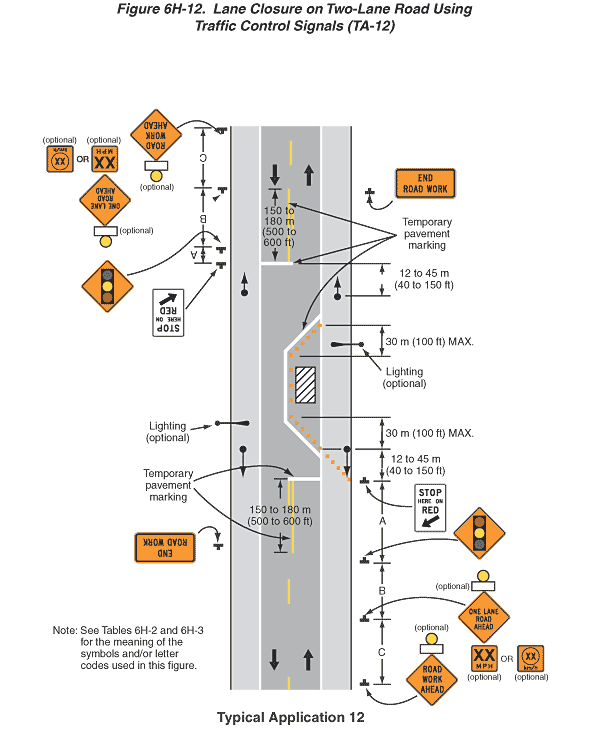
Figure 6H-12. Lane Closure on Two-Lane Road Using Traffic Control Signals (TA-12)
This figure illustrates an example of a lane closure on a two-lane road using traffic control signals. A legend under the figure states that this is Typical Application 12. A note states "Note: See Tables 6H-2 and 6H-3 for the meaning of the symbols and/or letter codes used in this figure."
This figure shows a vertical two-lane roadway with one lane of traffic in each direction. Downward-pointing black arrows in the left lane and upward-pointing arrows in the right lane denote the direction of traffic. The opposing lanes are shown separated by a broken yellow line. A shoulder is shown to the right of each travel lane. The shoulders are shown separated from the travel lanes by a solid white line.
At the bottom of the figure and to the right of the shoulder of the northbound lane, a black inverted "T" is shown denoting a sign. The sign assembly is shown as composed of a yellow warning light labeled optional mounted above a diamond-shaped orange sign with a black border and the words "ROAD WORK AHEAD" in black. This sign assembly is shown at a dimensioned distance C in advance of another sign assembly to the right of the shoulder. This sign assembly is shown as composed of a yellow warning light labeled optional mounted above a diamond-shaped orange sign with a black border and the words "ONE LANE ROAD AHEAD" in black, which is shown above a square orange advisory speed plaque labeled optional with the speed "XX MPH." in black or its metric alternate "km/h." The "XX" in the km/h sign is shown inscribed within a black circle. This sign assembly is shown at a dimensioned distance B in advance of a diamond-shaped orange sign with a black border to the right of the shoulder. The sign shows a symbol of a traffic signal with red, yellow, and green circles from top to bottom inscribed on a black vertical rectangle and is shown at a dimensioned distance A in advance of a vertical rectangular white sign with a black border to the right of the shoulder. It shows the words "STOP HERE ON RED" in black above a diagonal black arrow pointing down and to the left.
Adjacent to this sign, a temporary white stop line is shown on the pavement extending across the northbound lane. For a dimensioned distance of 150 to 180 m (500 to 600 ft) in advance of the stop line, a solid yellow line labeled as temporary is shown on the pavement to the right of the broken yellow line. At the location of the Stop Here On Red sign, a series of orange squares, denoting channelizing devices, is shown. The devices are shown beginning at the far right edge of the right shoulder and tapering to the white line separating the shoulder from the right lane at a dimensioned distance of 12 to 45 m (40 to 150 ft). At this point, a black circle-and-arrow symbol, denoting a traffic signal, is shown at the right side of the shoulder facing oncoming northbound traffic, and another is shown opposite it in the middle of the left shoulder of the southbound lane, also facing northbound traffic. For a dimensioned distance of 30 m (100 ft) MAX. beyond the signal, the channelizing devices are shown continuing to taper to the left to the broken yellow line separating the two lanes. The devices then are shown continuing in a straight line along the broken yellow line and to the left of the work space in the right lane, denoted by a vertical rectangle with diagonal black and white stripes. Another taper area is shown beyond the work space, where the channelizing devices are shown tapering back from the broken yellow line to the right edge of the right lane for a dimensioned distance of 30 m (100 ft) MAX. Temporary pavement marking is shown along the length of the channelizing devices from the right edge of the pavement at the south end adjacent to the traffic signal symbol to the end of the taper at the left edge of the shoulder on the north end. The marking is shown as a solid white line to the left of the devices. Adjacent to the taper, a horizontal black oar-shaped symbol is shown, labeled Lighting (optional), which is shown beginning to the right of the shoulder and extending almost across the shoulder. Beyond the taper, a traffic signal symbol is shown on the right shoulder facing southbound traffic, and another is shown opposite it in the middle of the left shoulder of the southbound lane, also facing southbound traffic. A dimensioned distance of 12 to 45 m (40 to 150 ft ) is shown beginning at the traffic signal symbol and extending northward to a stop line in the southbound lane. To the right of the shoulder and at the top of the figure, a horizontal rectangular orange sign with a black border is shown with the words "END ROAD WORK" in black.
At the top of the figure in the southbound lane, the same series of a Road Work Ahead sign, One Lane Road Ahead sign, traffic signal sign, Stop Here On Red sign, and temporary pavement markings (solid yellow line and stop line) is shown in advance of the work space, and the same lighting and End Road Work sign are shown beyond it.
